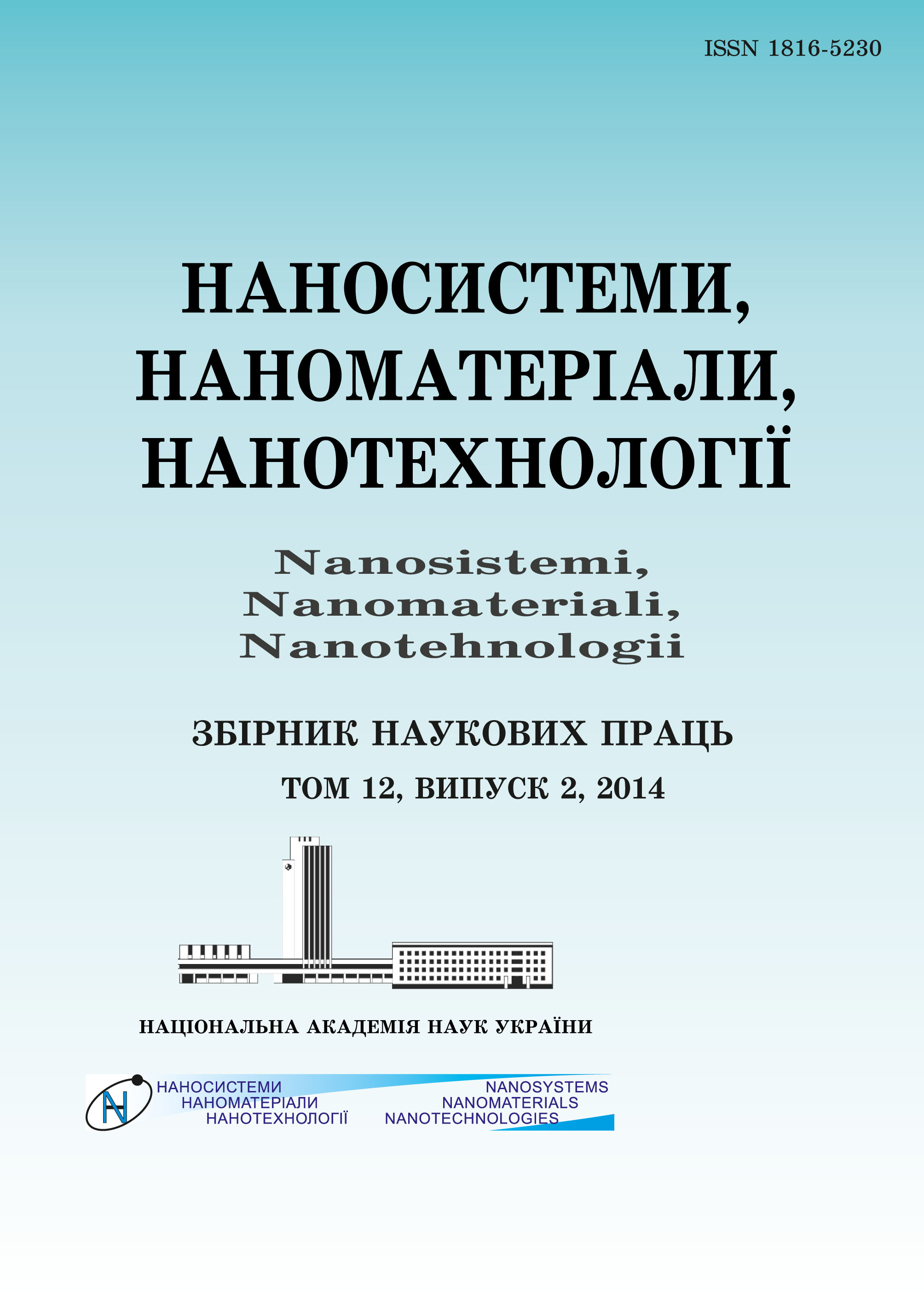|
|
|||||||||

|
Year 2025 Volume 23, Issue 2 |
|
|||||||
|
|||||||||
Issues/2025/vol. 23 /issue 2 |
|
Nataliia TIRON-VOROBIOVA1, Emrah ŞIK2, Anatoliy DANYLYAN1, Olha ROMANOVSKA1, Valentyn CHYMSHYR1, Ihor MASLOV1, Vitalii ZALOZH1, and Andrii NAYDYONOV1
1Danube Institute of National University 'Odesa Maritime Academy',9, Fanahoriyska Str., UA-68607 Izmail, Odesa Region, Ukraine
2Istanbul Technical University, Faculty of Maritime, Tuzla Campus, TR-34940 Tuzla/Istanbul, Türkiye
Driving Potential of Nanotechnological 'Softening' Approaches for the Maritime Industry: Application, Preference, and Prospects
363–377 (2025)
PACS numbers: 81.16.Hc, 81.20.Ym, 87.50.-a, 87.85.Rs, 89.60.Ec, 92.20.jb, 92.40.kc
The article discusses certain nanotechnologies' key aspects: their rapid development, purposes, and uses. The types of certain nanotechnology generation are explained. Emphasis on the use is given to the cleaning of drinking water, in particular, sewage and ballast water. The latter is discussed at the level of the publisher and organizer of the international water industry—Global Water Intelligence. The variety of ways of applying nanotechnologies to reduce pollution of aquatic environments is presented, and the disadvantages are emphasized. The article is descriptive and applied to help the reader understand the essence of the growth of the nanotechnology boom in several different technologies, ways, and distribution methods. A comparison of nanofiltration membranes with reverse osmosis (SWRO) systems is provided, concerning to processes at the nanoscale level, namely, the use of semi-permeable membranes, which allow only molecules of a certain size to pass through; the pore size in such membranes is measured in nanometers. Therefore, reverse osmosis is an example of a nanoscale technology that is widely used for water purification. The article contains, as a research part, an illustrative example of the application of the nanotechnological principle of the self-discharge filter in the innovative process of disinfection/purification of ballast water according to the quality standard D-2 of the IMO Convention, based on an experimental level by the developers of the Danube Institute of the National University 'Odessa Maritime Academy' (DI NU 'OMA'; Izmail, Ukraine). It is shown how, with the help of its effective application process, the level of final destruction of invasive foreign organisms in ballast water increases. In the discussion of the article, it is stated that this filter will significantly reduce the labour costs of the marine ships' engine crew for the production of high-quality distillate and will allow to improve the cleaning and washing of the filter working elements of the modernized ships' SWRO. In particular, shortly, these are ceramic membranes, which will be commercialized and industrialized in the areas of water purification and desalination, as opposed to the use of the SWRO and nanofiltration membranes. The application No. 1059B162300675 submitted by the applicant, Candidate of technical sciences, Docent of the Department of Management in the Transport Industry of the DI NU 'OMA' of the Ministry of Education and Science of Ukraine Nataliia Tiron-Vorobiova (2216B—TÜBITAK-TWAS Postgraduate and Postdoctoral Fellowship Programs 2024–2027), refers to the use of ceramic membranes: Ballast Water Treatment System (BWTS) using Ceramic Membrane Filtration Method, Electrooxidation (EOx) Development and Ecological Assessment. The application provides a key decision (quotation): 'Recently, research has mainly focused on improving adequate, cheap, and aquatic-safe ballast water management systems (BWTS). However, most of these treatment processes alone do not meet all the required discharge quality indicators; they require modification. Thus, there is a significant need for innovative environmental technologies and clean, cost-effective, sustainable maintenance of safe seawater sources. Recently, the integration of electrochemical (EOx) processes with improved membrane filtration processes has been considered as a means to overcome this barrier. The main idea is aimed at creating modern BWTS that meet the requirements of the quality standard D-2 of the IMO Convention. BWTS developed based on experimental research within the bilateral project Ukraine–Türkiye ('2514 TÜBİTAK ve MESU İkili İşbirliği Programı', 2021), is innovative, multifunctional, based on high nanotechnological principles.'. Against the background of the driving advantage of the use of nanofiltration, reverse osmosis, special attention is be paid to the acceptance of 'nanotechnology: the environment' (because the latter remains under threat) with the participation of the increasingly widespread use of nanotechnological approaches.
KEY WORDS: nanofiltration, nanofiltration materials, reverse osmosis, marine environment, 'softening' membranes, self-discharging nanofilter
DOI: https://doi.org/10.15407/nnn.23.02.0363
REFERENCES
- Wastewater; https://www.aquatechtrade.com/news/wastewater/emerging-resource-recovery-opportunities-nanofiltration
- Nano. Understanding; https://www.understandingnano.com/water.html
- Waterprofessionals; https://www.waterprofessionals.com/learning-center/nanofiltration/#:~:text=Nanofiltration%20is%20often%20used%20to,pretreatment%20than%20reverse%20osmosis%20systems
- Uri Lachish, Osmos Reverse Osmosis and Osmotic Pressure What They Are, (guma science); https://urila.tripod.com/
- J. Kucera, Reverse Osmosis—Industrial Applications and Processes (Wiley–Scrivener Publishing LLC: 2010).
- A. G. Danylyan, Automation of Ship Technical Equipment, 17: 24 (2011); http://mail.onma.edu.ua/index.php?nauka-asts_ru
- Aditi Risbud, Cheap Drinking Water from the Ocean. Carbon Nanotube-Based Membranes Will Dramatically Cut the Cost of Desalination; https://www.technologyreview.com/2006/06/12/228982/cheap-drinking-water-from-the-ocean/
- Kevin Bullis, A Cheaper Way to Clean Water. Oasys Water Says It Will Test Complete, Large-Scale Systems Using Forward Osmosis Early Next Year (December 16: 2010); https://www.technologyreview.com/2010/12/16/89485/a-cheaper-way-to-clean-water/
- A Review on Reverse Osmosis and Nanofiltration Membranes for Water Purification; https://www.ncbi.nlm.nih.gov/pmc/articles/PMC6723865/
- F. Rahman, Nanostruktury v Ehlektronike i Fotonike [Nanostructures in Electronics and Photonics] (Moskva: Tekhnosfera: 2010) (in Russian).
- Yu. I. Golovin, Nanotekhnologicheskaya Revolyutsiya Startovala! [Nanotechnology Revolution Has Started!] (in Russian); http://www.abitura.com/modern_physics/nano/nano2.html
 This article is licensed under the Creative Commons Attribution-NoDerivatives 4.0 International License ©2003 NANOSISTEMI, NANOMATERIALI, NANOTEHNOLOGII G. V. Kurdyumov Institute for Metal Physics of the National Academy of Sciences of Ukraine. E-mail: tatar@imp.kiev.ua Phones and address of the editorial office About the collection User agreement |